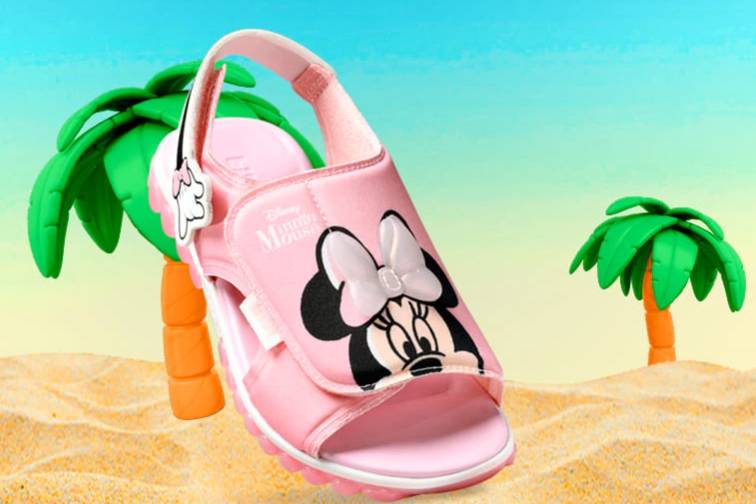“Last year I thought, why not give it a go for my 52nd birthday?”
The adrenaline rush and excitement of climbing and reaching a peak drives her, as does a challenge that pushes her outside her comfort zone.
Hozefa Topiwalla, 52, is always on the lookout for a challenge. When Anne asked him to join, the finance executive and fitness enthusiast saw it as “the perfect opportunity to push myself”.
While all three friends have spouses, none of them wanted to join in this adventure.
How to reach this peak
Climbing Kilimanjaro is difficult because of its rocky, slippery terrain and tough living conditions, says Kumra. Their climb involved six days of nonstop steep ascent on mostly rocky terrain and two days of extremely steep descent. There is no lodge; trekkers sleep in tents.
The friends set off from the Mti Mkubwa camp at 2,650 metres, with a group of porters carrying their camping equipment. They chose the 70-kilometre (43.5-mile) Lemosho route, the longest route to the top but the one with the highest success rate. Of the people who attempt it, 85 to 95 per cent make it to the top.
“One of the distinctive features about climbing Kilimanjaro is the changing landscape: you hike through the rainforest, moorland, alpine desert and glacial snow. As we approached 10,000 feet, the scenery transformed. Trees gave way to bushes and shrubs and the air thinned, demanding a slower pace.”

Their guide Athumani has summited the mountain more than 100 times and stressed that gradual ascent was key.
“The porters kept saying ‘pole, pole’ as we hiked, which means ‘slow and steady’ in Swahili,” Kumra says. They encouraged her, saying, “Mama Jaya is fit and mentally strong”.
They hiked for five to seven hours daily, having breakfast at 7.30am, lunch at 1.30pm, and dinner at 7.30pm, and were off to bed at 8.30pm.
There was mild to heavy rain for a few hours almost daily, and a massive storm one evening. “My tent almost collapsed, and I felt I would roll down the ridge with it,” Kumra says.
“It’s harder to sleep as the altitude increases. The temperature drops dramatically and we slept in our tents in our sleeping bag with two to three layers on.”
The night before the final climb, the hot water bag keeping her warm inside her sleeping bag burst – soaking everything. Changing into dry clothes was a big task, she says.
Being the only woman in the party had its own challenges. “I had to find a rock or a bush to duck behind to answer nature’s call. It was so much easier for the men,” Kumra jokes.
Anne says that day six – when they began the push to the top – was the most difficult.
“We hiked from 9am to 2pm, took a break, and then began the arduous climb to the summit at 10.30pm. We made our way through the darkness, the glow of the head torches lighting up our path.
“We were physically and mentally exhausted, sleep deprived and the temperature was freezing. The route was very steep and at times it was difficult to stay upright,” Anne says.
“The trail from the base camp to the summit zigzags up and is 7km of hiking and 1,095 metres of elevation gain, which took 14 hours. We summited at noon the next day.
“Two hundred metres before the summit, I saw an 80-year-old man labouring ahead with his guide. It was a sight I will not forget.”
Stopping several times to catch his breath, Anne sat for a bit at Stella’s Point at 5,756 metres before pushing himself for another hour to reach the top.
At the summit, Kumra says: “We had a feeling of shared pride as we sat on Uhuru Peak eating energy bars. We felt on top of the world.”
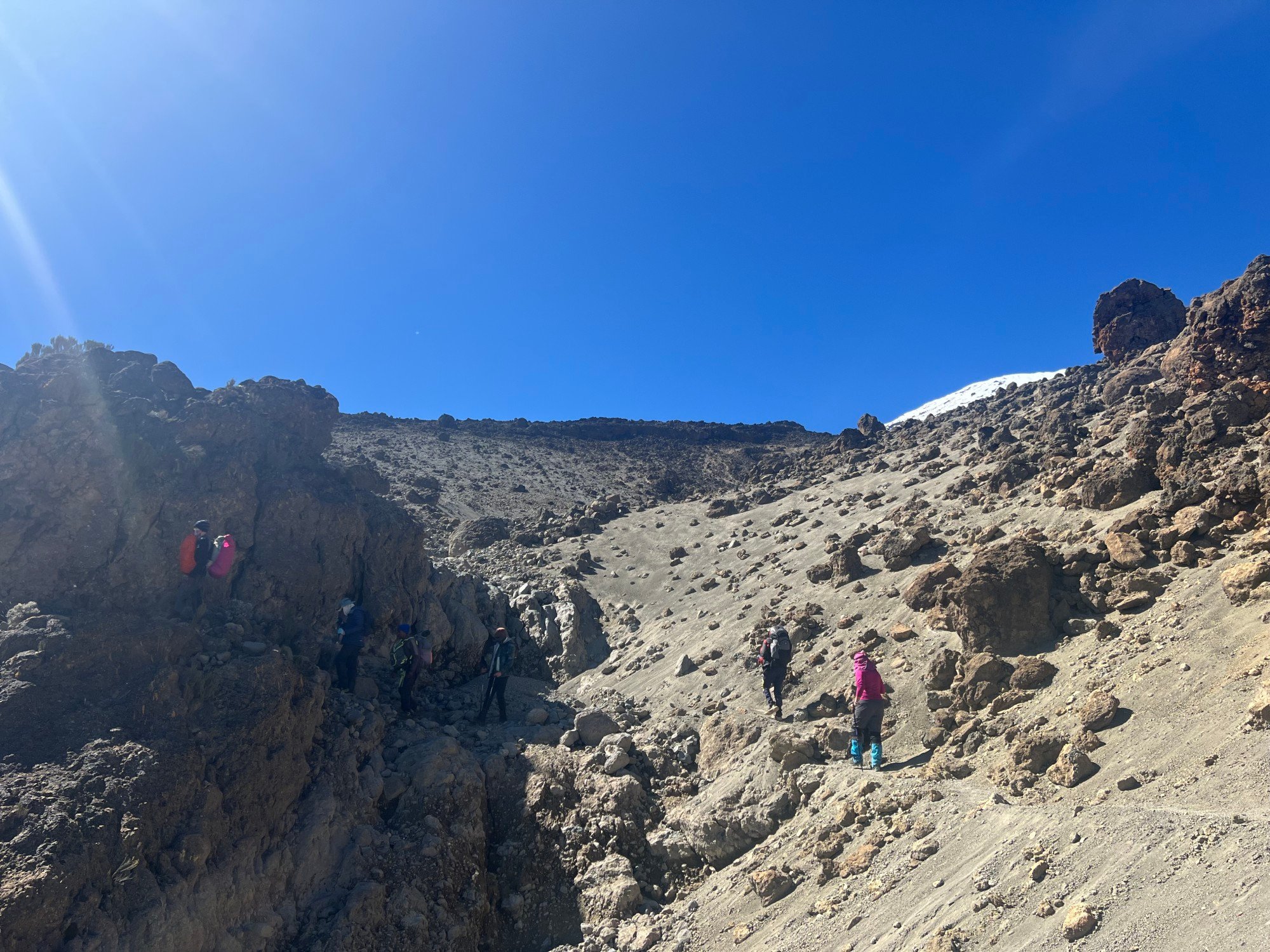
After 20 minutes, they began the steep two-day downhill trek.
“You literally come rolling down,” says Anne. “There is a high risk of injury. You are advised to run down, which is counterintuitive, but is the correct technique.”
Topiwalla found the first five days of the hike easy – it was the last three to the top and down that were more challenging. The trip taught him the power of teamwork, he says.
“Despite different fitness levels, we summited and descended as a group, supporting each other in moments of weakness.”
Kumra says that, more than anything, Kilimanjaro tests your mental strength.
“Believing in ourselves and pushing through when we were not feeling our best was the key. It was sheer willpower that saw us reach the summit.”
Camaraderie between the friends and the porters’ encouragement kept them going, Anne says. He will always cherish “moments with Sagar, plodding ahead together, sometimes conversing, at other times enjoying the silence”.
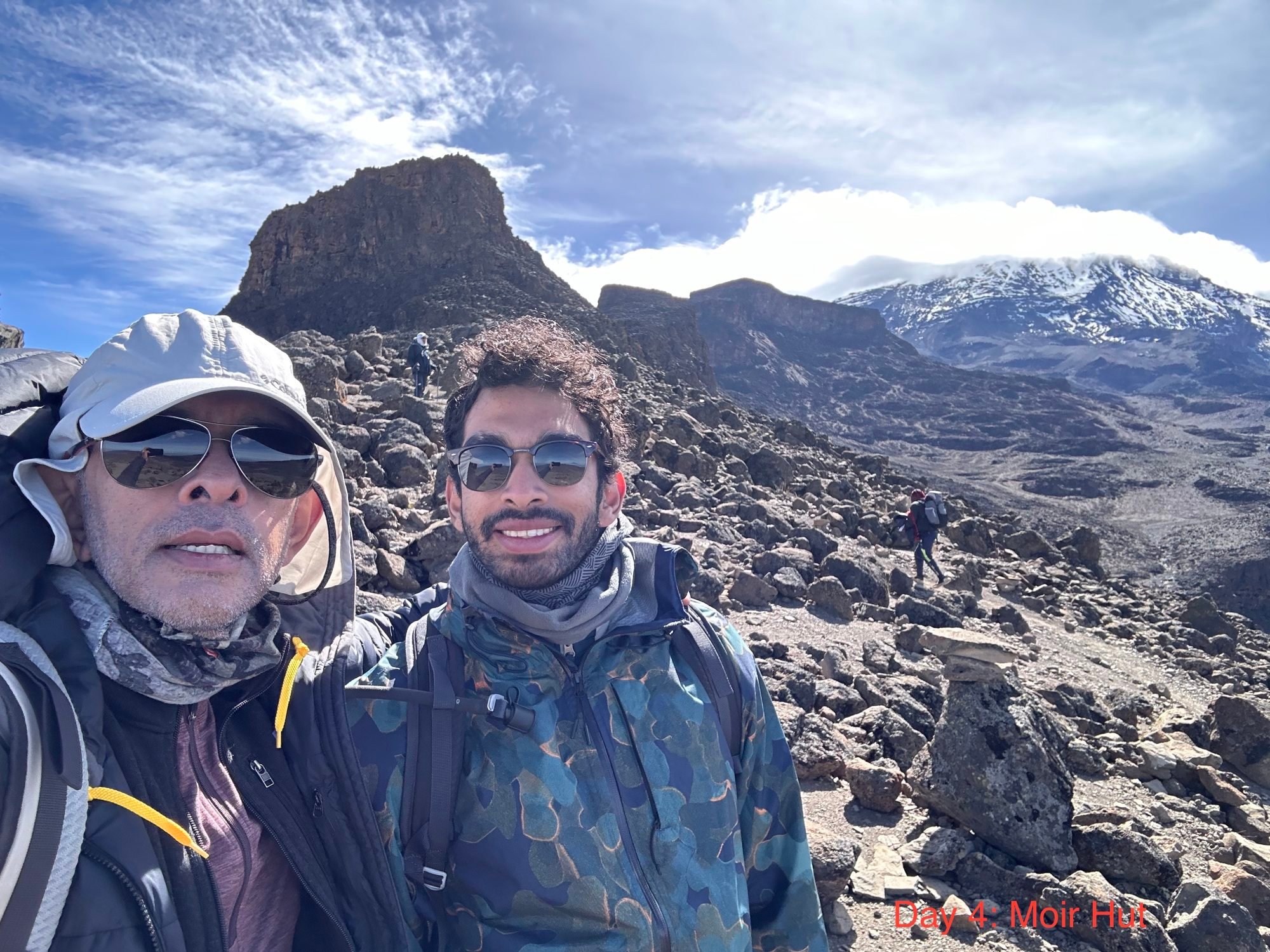
The three agree that walking for up to 18 hours on summit night with little sleep in freezing temperatures was the toughest part. Getting into their clothes and prepping their gear ahead of that final ascent took more than an hour; all the while they shouted questions and words of support through the walls of their tents.
Waiting for each other – once for nearly 90 minutes – in the freezing weather was hard. But they wanted to finish together, and did. On the descent, Topiwalla and Seshu slipped a few times – without hurting themselves too much.
How they prepared
Topiwalla had developed osteoarthritis at the age of 30; degeneration in his finger joints left him unable to play tennis, cricket or golf. He does cardio and strength training six days weekly to improve and strengthen his grip.
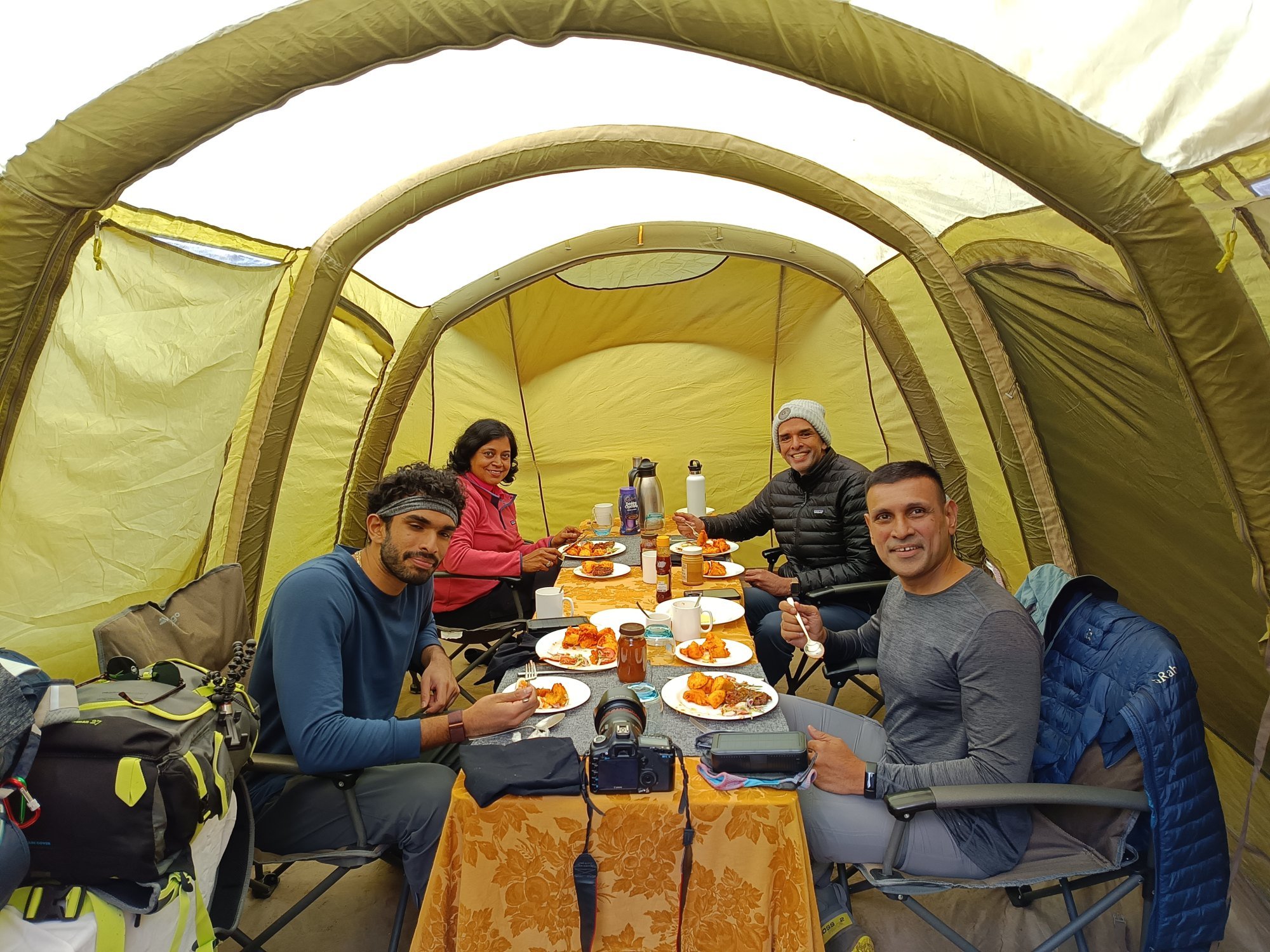
What they learned on the climb
“Before the trip, I knew Seshu and Jaya as acquaintances. Facing tough moments together has formed a special bond among us,” Topiwalla says.
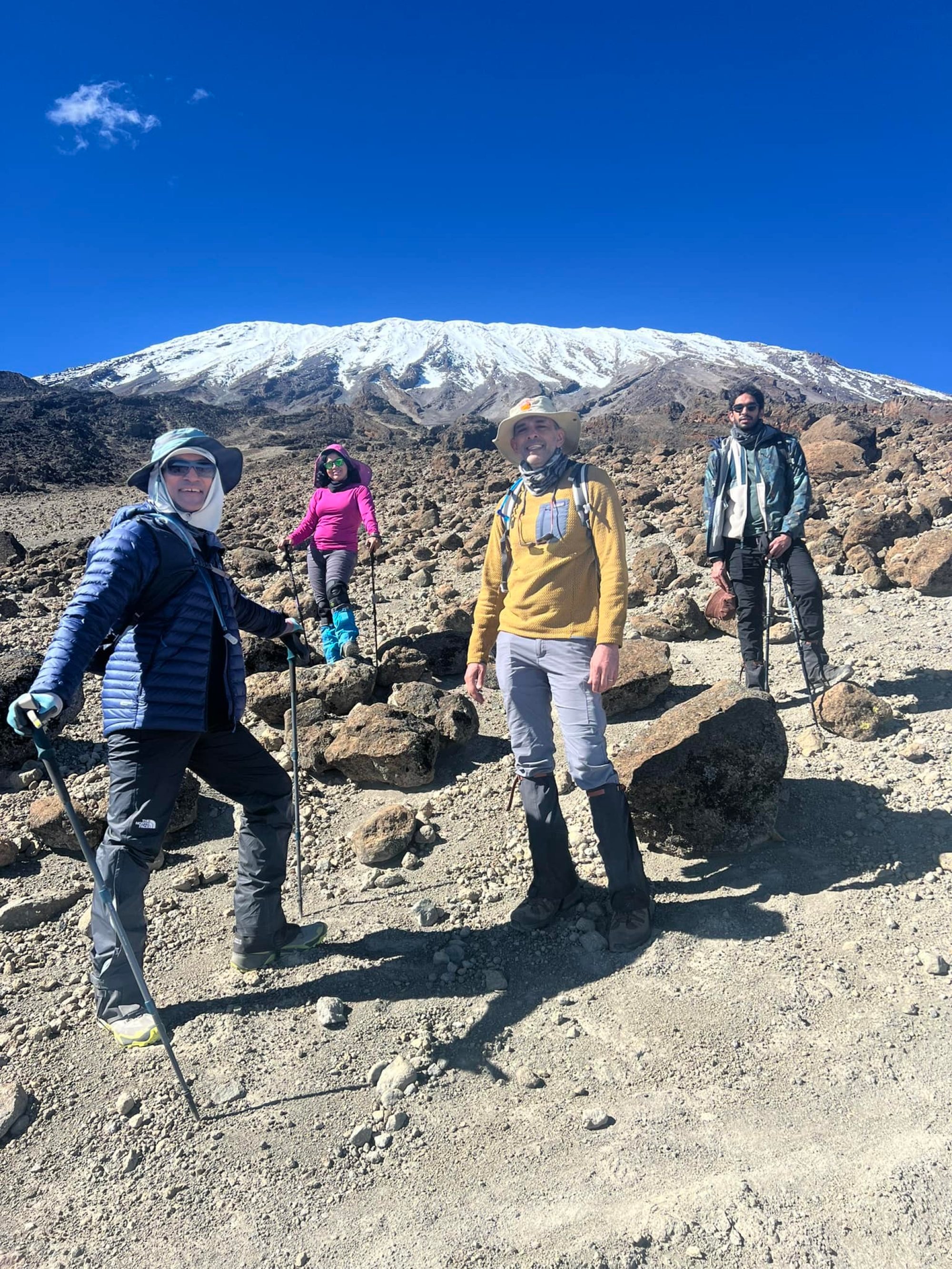
With the right preparation, anyone can climb the mountain, Topiwalla adds says. His tips for others planning to climb Kilimanjaro:
-
Walk slowly (Pole! Pole!)
-
Do not compromise on the gear, especially on hiking boots, and remember to have a neck gaiter and sunblock; and
-
Train hard in advance, doing both cardio and strength training.
It is mandatory to climb with a guide. The cost of a trek, with guide, porters, meals, and tents and equipment, is US$2,000 to US$6,000, excluding airfare.





